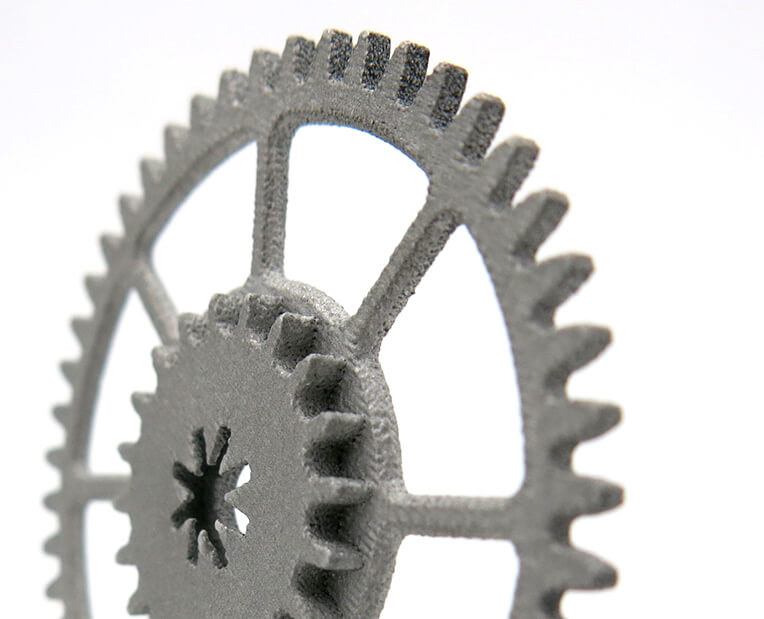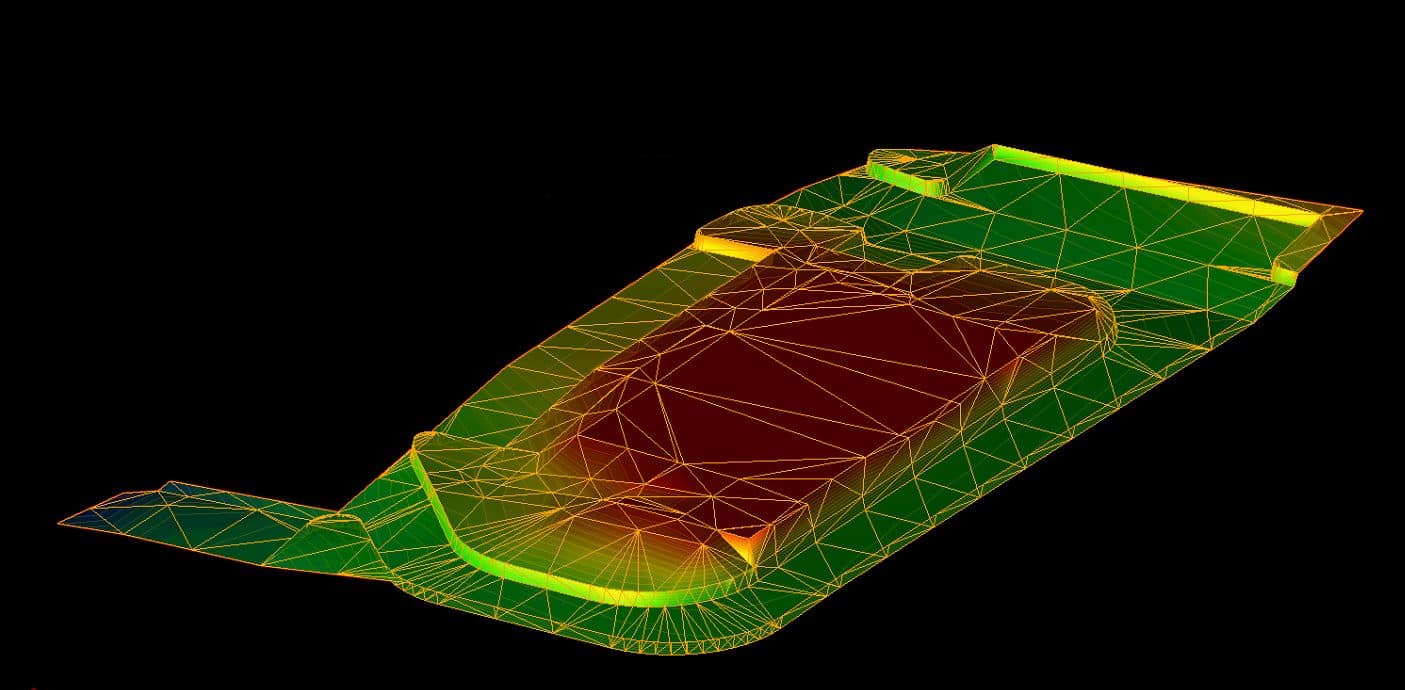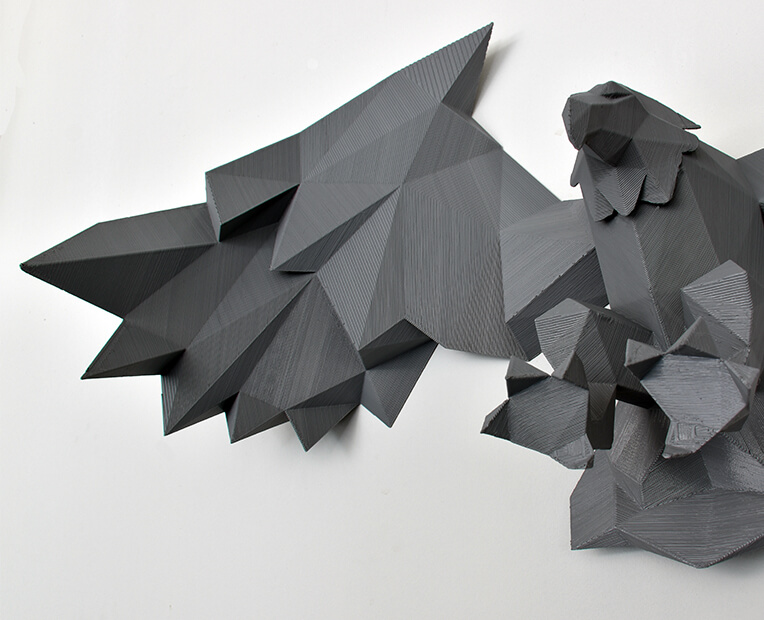3d materials physical review
For transition metal dichalcogenides TMDs bond coordination within a single van der Waals layer changes the out-of-plane symmetry that can. The field of two-dimensional 2D materials has expanded to multilayered systems in which electronic optical and mechanical properties change---often dramatically---with stacking order thickness twist and interlayer spacing.

Ultrasint Tpu01 Flexible Polymer 3d Printing
This Review discusses the.

. The 3D printer would not be an essential tool of the field without the scientific understanding and know how related to the biology of the cells and how to put them together with biomaterials to create tissues and organs. Subsequently after emphasizing the importance of normalized property characterization for the 3D structures. Irene Lucas Pilar Jiménez-Cavero J.
Chemical solution synthesis and ferromagnetic resonance of epitaxial thin films of yttrium iron garnet. Integrating 3D bulk materials with 2D layered materials can harness promising properties and unique functions. The article 3D Printing in biomedical engineering.
This paper reports the first realization of epitaxial GdBi thin films by molecular beam epitaxy. This review starts with the definition classifications brief history and basic synthesis chemistries of 3D graphene materials. Materials 3 101202 R 2019 Published 21 October 2019.
Composites are materials that are comprised of more than one component with different chemical and physical characteristics. Through this difficult time APS and the Physical Review editorial office are fully equipped and actively working to support researchers by continuing to carry out all editorial and peer-review functions and publish research in the journals as well as. Application of responsive biomaterials in 3D bioprinting.
More 3-Year IF Trend Prediction Ranking Key Factor Analysis. Materials 3 110301 2019 Published 8 November 2019. Papers belonging to this collection will be published throughout 2020.
The controlled modification of graphenes electronic structure through chemical doping is a promising way to expand its possible applications. Processes materials and applications by Wang et al. Composites have superior chemical physical and mechanical characteristics as compared to single material properties When compared to conventional processes composites are gaining popularity in additive.
This thematic issue of Chemical Reviews compiles categorizes and critically assesses important aspects of 3D printing for. By systematically studying the electronic and magnetic properties with varying film thicknesses from 40 nm to 5 nm the authors found that the semimetallicity of GdBi is lifted. Responsive biomaterials can be used as critical components in bioinks allowing for structural.
Materials 1 074407 2017 Published 20 December 2017. In this article we provide a comprehensive and up-to-date review of 3D printing and its applications in the biomedical field. Provides a comprehensive review of 3D printing and its increasing utilization in the biomedical engineering field.
Additive manufacturing often known as 3D printing is a type of digital fabrication technique that builds physical items from a geometrical model through the addition of materials. A Responsive biomaterials can be triggered by physical chemical and biological stimuli and respond with crosslinking breaking of bonds or changes in shape and wettability. Wang 3D printing in biomedical engineering.
We systematically present and discuss 3D printing technologies materials. The field of 3D printing is one that is rapidly expanding. Then a critical discussion on the design considerations of 3D graphene materials for diverse applications is provided.
3D printing has been a common practice around the world in recent years. COVID-19 has impacted many institutions and organizations around the world disrupting the progress of research. The invited articles and an editorial by the Guest Editor David Tománek are linked below.
It is also a subject of interest for fundamental research as the effects of the dopants on the electronic structure of a two. Addressing these challenges requires the integration of advances in physics materials science engineering biological sciences and medicine. Vila-Fungueiriño Cesar Magén Soraya Sangiao José Maria de Teresa Luis Morellón and Francisco Rivadulla.
The Physical Review Materials 3 Year Journals Impact IF 2021-2022 is 4867. Physical Review Applied and Physical Review Materials are pleased to present the Collection on Two-dimensional Materials and Devices highlighting one of the most interesting fields in Applied Physics and Materials Research. Processes materials and applications Appl.

Physical Review Materials Two Dimensional Materials And Devices

Physical Review Materials Two Dimensional Materials And Devices

Aluminum Material For 3d Printing 3d Printing Aluminum

Designing Ultra Flat Bands In Twisted Bilayer Materials At Large Twist Angles Theory And Application To Two Dimensional Indium Selenide Journal Of The American Chemical Society

Physical Review Materials Two Dimensional Materials And Devices

Phys Rev X 11 031017 2021 Designing Three Dimensional Flat Bands In Nodal Line Semimetals

Physical Review Materials Two Dimensional Materials And Devices
Applied Materials Today Journal Elsevier

What Is 3d Modeling How 3d Modeling Is Used Today

The Best 3d Printer Nozzle Types Sizes Materials All3dp

Physical Review Materials Two Dimensional Materials And Devices

New Dimension In Magnetism And Superconductivity 3d And Curvilinear Nanoarchitectures Makarov 2022 Advanced Materials Wiley Online Library

Physical Review Materials Two Dimensional Materials And Devices

What Is Pla Plastic Filament And How To Use It For 3d Printing

3d Printable Bioactivated Nanocellulose Alginate Hydrogels Acs Applied Materials Interfaces

Additive Manufacturing And 3d Printing In Manufacturing

Physics 3d Printed Magnets Made From Recycled Materials

So Many Materials Physics World

Revealing Nano Scale Lattice Distortions In Implanted Material With 3d Bragg Ptychography Nature Communications